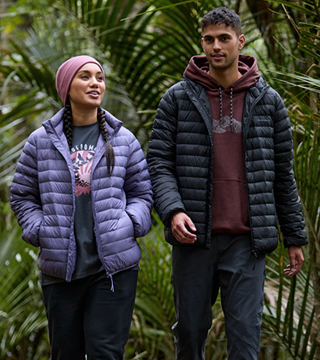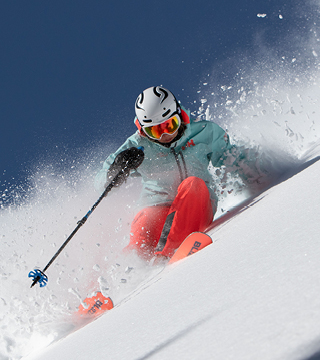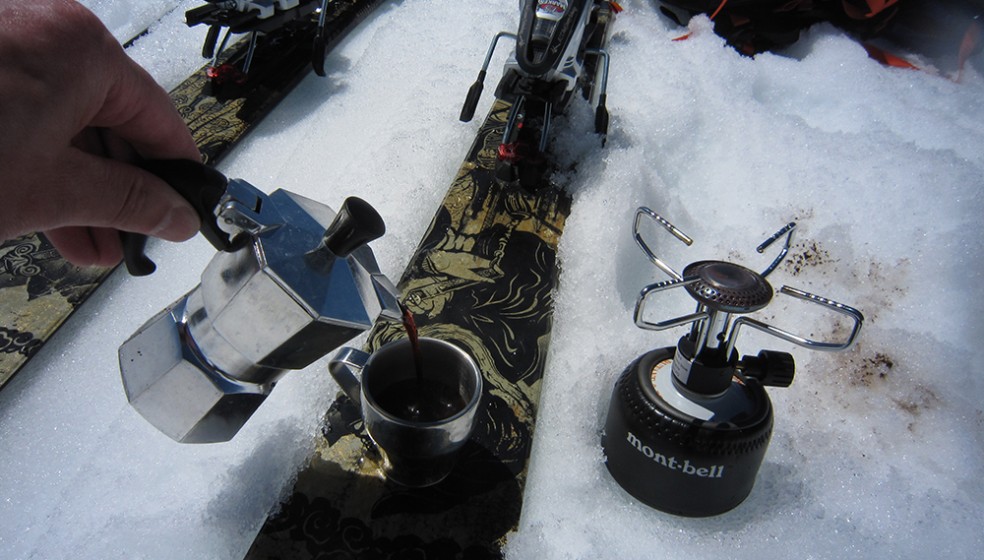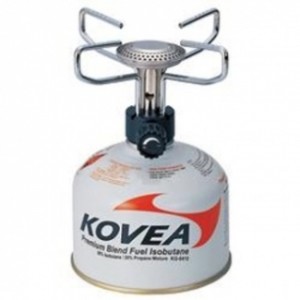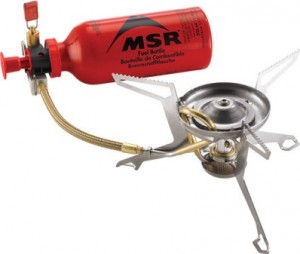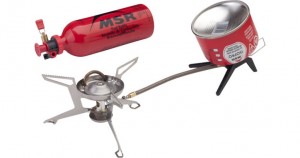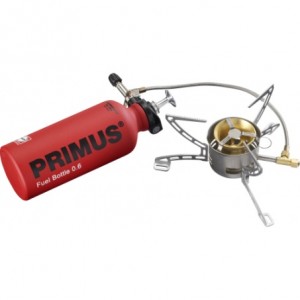Gas Cookers
Often we think of food more than anything else, and being in the outdoors exerting energy makes us especially hungry. Getting the right gear for your cooking on your adventures is important, and in some cases having the right equipment can be lifesaving. There are countless cooker varieties out there, and numerous fuel options to go with the varying designs. The following list should help to identify the key factors to consider when purchasing a new cooker.
Type of adventure: What are you planning to do? Do you plan on climbing that peak that involves high altitude and multiple camps, are you taking the family on an overnight tramp, or are you simply going to be cooking on the road side out of your car. Whatever you do, the size of the group and the conditions you will encounter are very important when selecting a cooker. Weight of the cooker is another consideration, as if you will need to carry it on your back for multiple days, the lighter it is the easier it will be to carry with you.
Type of fuel: Cookers work of different types of fuel. Examples are butane/propane gas canisters, white spirits and or other fuels like alcohol, methylated spirits, kerosene and petrol.
Gas Canisters:
The benefit of ‘ready-to-go gas canisters’ is that they are designed to be fast and easy to use! The butane/propane canisters burn clean, are light weight, and are safe to have in your pack. The downside is that this gas type is inefficient when it is cold or when used at high altitude, and thus you will notice longer than optimal cooking times. The other down side to canisters is the space they take up in your pack, especially if you need to carry multiple for a long trip. It can also be difficult to gauge how much residual fuel is left at the end of a trip meaning you may need to take an additional canister on the following outing to ensure you don’t run out. However, Gas Canisters are very good value for money and are compatible with the majority of inexpensive cookers. If you need a reliable stove at low cost, a canister stove will often be your best option.
Liquid Gas:
Liquid gas stoves typically run on white gas, also known as camp fuel or naphtha. White gas burns exceptionally hot and generally has a significantly higher BTU (British Thermal Units) output than canister stoves, which ultimately gives you better cooking efficiency in the backcountry. In other words, your water will boil faster and your food will cook quicker and thus you use less fuel overall. Liquid gas also has the convenience of not being restrained by manufacturer packaging, meaning you can add or remove fuel from your gas bottle, and only take the fuel you need on a trip. Just be careful to ensure that the cap on the gas bottle is closed tightly… It sounds like common sense but making this mistake will damage your gear, leave you without fuel to cook with, and leave your pack smelling like a truck stop! When refilling your bottle be sure to leave a little air space at the top as gas will expand as the temperature rises, and the excess pressure could potentially create a hazard.
Because this form of fuel is in a liquid state, you do need to manually pump the plunger in the fuel bottle to create the pressure that will supply the burner. Liquid fuel stoves also require more maintenance than canister stoves to keep them performing to a high standard. Maintenance kits are available for purchase from all major cooker manufacturer brands. Coleman brand liquid fuel is commonly used in New Zealand and is readily available at virtually all outdoor shops. The running costs are very low, it is a very clean burning, and most importantly it is very hot burning. One important note regarding liquid fuel is that although it is readily available internationally, used gas bottles are not permitted in checked luggage on planes. This means if you plan on taking your cooker on an international trip, you will likely need to purchase a new gas bottle upon arrival at your destination.
Multi-fuel:
Multi-fuel stoves offer the ultimate in versatility. As the name implies, multi-fuel cookers have the ability to run on a variety of fuels types. Many models can burn white gas, kerosene, diesel, unleaded gasoline, aviation fuel, and the list goes on. It’s because of this incredible versatility that multi-fuel stoves are the preferred choice for international trips and extremely rural areas where a canister or white gas is hard to come by. A number of multi-fuel stoves also have the versatility of being able to run on canister fuel, although a specific attachment on the fuel house is required for this to work. The MSR Whisperlite Universal stove is a prime example of the ultimate in versatility. Although this style of cooker has a number of advantages over white gas and canister stoves, they are generally more expensive. They also require more regular maintenance and cleaning.
Running costs: The running costs of a stove differ significantly from stove to stove and in the long term can have a big impact on the true cost of the equipment. Running costs are affected by the environmental conditions in which you use the stove, how many people you are cooking or boiling water for, and the efficiency of the stove itself. Cheaper stoves tend to run using gas canisters, and therefore are disadvantaged in terms of heat output. The lower heat output relates to slower cooking times and thus higher fuel consumption. Cheaper stoves in general are also less efficient due to materials used and design features which again can result in increased fuel consumption. Stoves that use liquid-fuel burn hotter than canister stoves, although the exact burning fuel determines how efficient it will be. Liquid-fuel burners in general are more expensive to buy, but the running costs are a lot lower than that of gas canisters. Over time the upfront additional cost of a liquid fuel stove can often be recouped from fuel savings. The conditions in which you use the stove also effect efficiency. Altitude effects output temperature, due to lower air pressure and the decrease in oxygen. This means the higher you ascend, the lower the maximum heat output will essentially be. Air temperature will also affect heat output, especially in canister stoves. Extreme cold may cause the stove to fail completely. For these reasons it is important to know what conditions you need a stove to perform in. If you get it wrong you risk not being able to boil water or cook food, and ultimately put your safety at risk.
Ease of use: There is no doubt that canister cookers are the easiest to assemble and use in general conditions. With canisters there is no preheating of the stove needed, and with stoves featuring Piezo ignition, it is just a click-and-go action. Liquid fuel stoves are less convenient in terms of set up time, but have the advantage of a free standing cooker linked to the gas bottle by a hose. The freestanding base has a lower centre of gravity than most canister options, and therefore is less prone to tipping during use. The multi burner offers you the option of putting in (almost) anything flammable. This is an awesome option if you find yourself in a remote area of the world where you can’t be sure of what fuel will be available.
Know your conditions: It is important when buying a cooker to understand know what conditions it will be used in. Will altitude or cold be a factor? Will you be travelling to remote areas? Are you trying to go super lightweight? Do you only plan to tramp established trails between maintained backcountry huts? Are you after a cooker for one or two people, or do you plan to cook for the entire family?
Cooking is especially fun in the outdoors, and at the end of a hard days exercise there is nothing better than a hot meal. Cooking should be something to look forward to when you are out in the backcountry, and should leave you with a real sense of achievement. It is a lot easier to reflect on a great day outside with a full stomach.
Just remember, food always tastes better in the outdoors!
Marco Klein
Torpedo7 Dunedin


